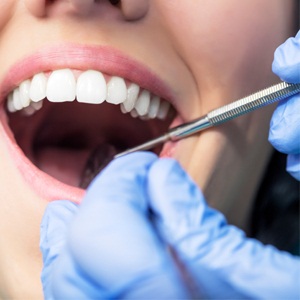
Occlusal disease is caused by an imbalance between the teeth, the chewing muscles and the jaw.
The consequences of occlusal disease, if left untreated, are many, progressive and widespread. The disease is not limited to the older generation.
Signs and symptoms are the following:
Loss of hard tooth tissue
1. Attrition: teeth repeatedly rubbing against each other
2. Erosion: acid eating away at the teeth
3. Abrasion: extraneous objects repeatedly rubbing against the teeth. Most often this is seen on the neck area of the teeth close to the gum-line and is due to traumatic "scrubbing" toothbrushing technique, but it can also be due to things like opposing tooth crowns, pens, needles etc.
4. Abfraction: When a tooth is occlusally overloaded, the flexion around the neck can cause stress fractures of the outer layer (enamel) of the tooth.
5. It’s important to realise that the outer layer of the tooth (the enamel) is much harder than the inner dentin and root surface. Once the outer layer is rubbed or eroded off, the damage to the tooth will progress much more quickly.
Splayed/flared front teeth with spaces between the teeth
Loss of posterior tooth height will lead to the forward positioning of the lower jaw in order to try and establish posterior contact. This will push the upper anterior teeth forward and create the flared appearance.
Cracking of the teeth
Mobility of the teeth
Pain in the tooth when biting
Overloaded teeth can cause compression of the ligament around the tooth and even the blood- and nerve supply to the tooth.
Oversensitivity to cold and warm foods
Pain in the muscles of mastication and even migraines
Treatment is aimed at correcting the centric occlusion, allowing the condyle to assume the correct position in the joint and for the masticatory muscles to relax. Moderate occlusal disease may only need minimal invasive equilibration of the occlusion.
Once the disease progresses, a multidisciplinary approach is often needed, involving not only your general dentist and laboratory technition, but also an orthodontist, periodontist and/or maxilla-facial surgeon. Total rehabilitation of the occlusion often involves many months of treatment. Proper planning is essential and requires aids such as articulated study models, a wax-up of the proposed outcome and multiple X-rays.
Regular dental check-ups will allow early detection of the problem and proper treatment thereof. Occlusal guards for patients who grind at night might also be helpful.
By Dr Marike Lourens (BChD) and Dr Arno Weber (BChD, Oral Pathology) – Intercare Glenfair
The consequences of occlusal disease, if left untreated, are many, progressive and widespread. The disease is not limited to the older generation.
Signs and symptoms are the following:
Loss of hard tooth tissue
1. Attrition: teeth repeatedly rubbing against each other
2. Erosion: acid eating away at the teeth
3. Abrasion: extraneous objects repeatedly rubbing against the teeth. Most often this is seen on the neck area of the teeth close to the gum-line and is due to traumatic "scrubbing" toothbrushing technique, but it can also be due to things like opposing tooth crowns, pens, needles etc.
4. Abfraction: When a tooth is occlusally overloaded, the flexion around the neck can cause stress fractures of the outer layer (enamel) of the tooth.
5. It’s important to realise that the outer layer of the tooth (the enamel) is much harder than the inner dentin and root surface. Once the outer layer is rubbed or eroded off, the damage to the tooth will progress much more quickly.
Splayed/flared front teeth with spaces between the teeth
Loss of posterior tooth height will lead to the forward positioning of the lower jaw in order to try and establish posterior contact. This will push the upper anterior teeth forward and create the flared appearance.
Cracking of the teeth
Mobility of the teeth
Pain in the tooth when biting
Overloaded teeth can cause compression of the ligament around the tooth and even the blood- and nerve supply to the tooth.
Oversensitivity to cold and warm foods
Pain in the muscles of mastication and even migraines
Treatment is aimed at correcting the centric occlusion, allowing the condyle to assume the correct position in the joint and for the masticatory muscles to relax. Moderate occlusal disease may only need minimal invasive equilibration of the occlusion.
Once the disease progresses, a multidisciplinary approach is often needed, involving not only your general dentist and laboratory technition, but also an orthodontist, periodontist and/or maxilla-facial surgeon. Total rehabilitation of the occlusion often involves many months of treatment. Proper planning is essential and requires aids such as articulated study models, a wax-up of the proposed outcome and multiple X-rays.
Regular dental check-ups will allow early detection of the problem and proper treatment thereof. Occlusal guards for patients who grind at night might also be helpful.
By Dr Marike Lourens (BChD) and Dr Arno Weber (BChD, Oral Pathology) – Intercare Glenfair




 Publications
Publications
 Partners
Partners










